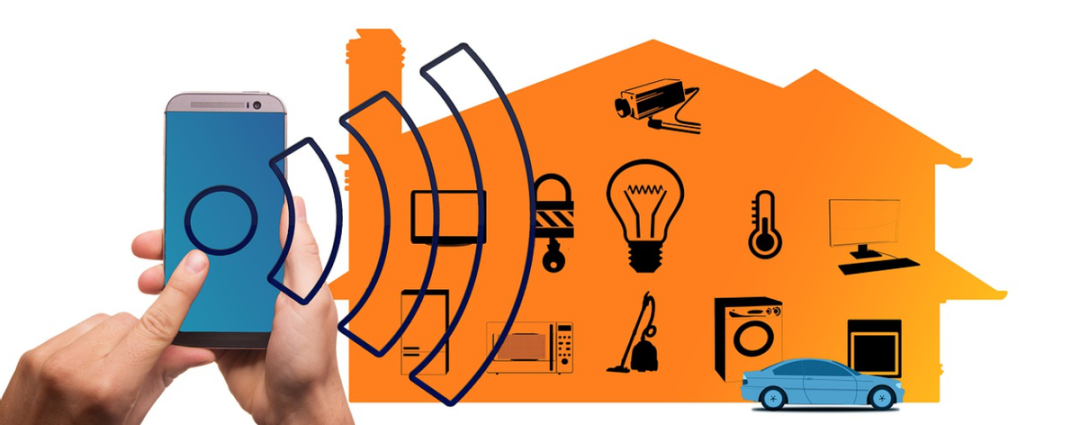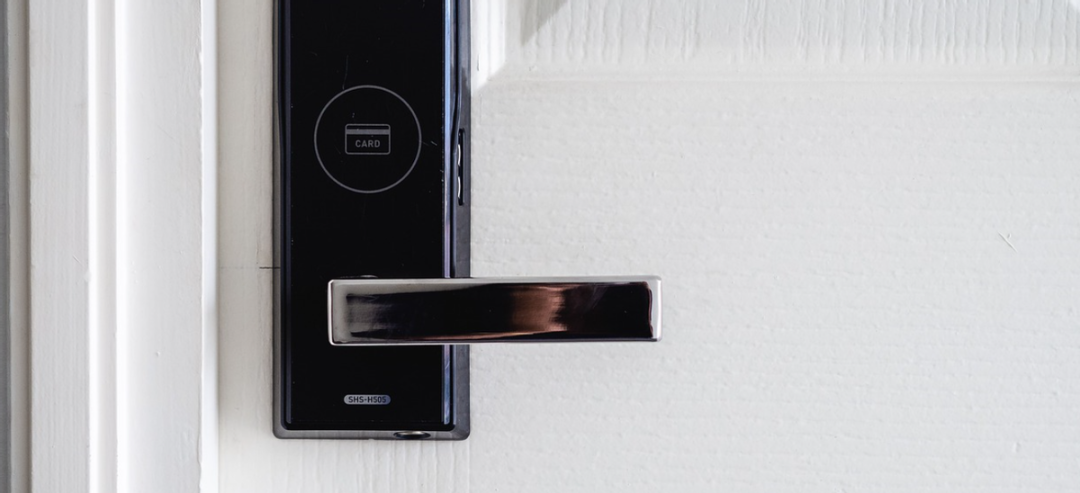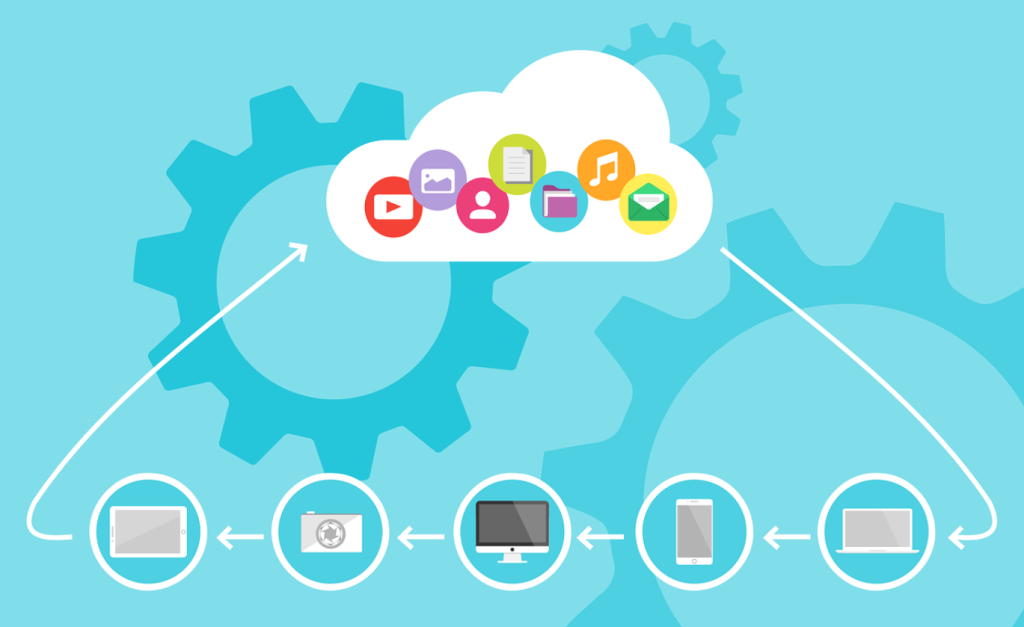[To B or not To B, this is a question. -- Shakespeare]
In 1991, MIT Professor Kevin Ashton first proposed the concept of the Internet of Things.
In 1994, Bill Gates’ intelligent mansion was completed, introducing intelligent lighting equipment and intelligent temperature control system for the first time. Intelligent equipment and systems begin to enter the sight of ordinary people.
In 1999, MIT established the “Automatic Identification Center”, which proposed that “everything can be connected through the network”, and clarified the basic meaning of the Internet of things.
In August 2009, Premier Wen Jiabao put forward “Sensing China”, iot was officially listed as one of the country’s five emerging strategic industries, written into the “Government work report”, iot has attracted great attention from the whole society in China.
Subsequently, the market is no longer limited to smart cards and water meters, but to various fields, iot products from the background to the front, into people’s sight.
During the 30 years of the development of the Internet of Things, the market has experienced many changes and innovations. The author combed the history of the development of To C and To B, and tried to look at the past from the perspective of the present, so as to think about the future of the Internet of things, where will it go?
To C: Novelty products attract the public’s attention
In the early years, smart home items, driven by policy, mushroomed like mushrooms. As soon as these consumer products, such as smart speakers, smart bracelets and sweeping robots, come out, they are popular.
· Smart speaker subverts the concept of traditional home speaker, which can be connected by wireless network, combine functions such as furniture control and multi-room control, and bring users a brand new entertainment experience.Smart speakers are seen as a bridge to communicate with smart products, and are expected to be highly valued by a number of large technology companies such as Baidu, Tmall and Amazon.
· Xiaomi smart bracelet behind the creator, R&D and production of Huami technology team optimistic estimate, Xiaomi band generation at most sell 1 million units, the results of less than a year on the market, the world sold more than 10 million units; The second generation band shipped 32 million units, setting a record for Chinese smart hardware.
· Floor mopping robot: satisfied with people’s fantasy adequately, sit on sofa to be able to complete housework. For this also created a brand new noun ” the lazy economy”, can save the housework time for the user it, as soon as it comes out is favored by many intelligent product lovers.
The reason why To C products are easy to explode in the early years is that smart products themselves have hotspot effect. Users with decades of old furniture, when see sweeping robot, intelligent bracelet watches, intelligent speakers and other products, will be under the drive of curiosity buy these trendy goods, at the same time with the emerging of various social platform (WeChat circle of friends, weibo, QQ space, zhihu, etc.) will be the characteristics of the amplifier, intelligent products and spread quickly. People hope to improve the quality of life with smart products. Not only have manufacturers increased their sales, but also more and more people have started to pay attention to the Internet of things.
In the smart home into people’s vision, the Internet is also developing in full swing, its development process produced a tool named user portrait, become the driving force of the further explosion of smart home. Through the precise control of users, clear their pain points, the old smart home iteration out of more functions, a new batch of products also emerge in endlessly, the market is thriving, give people a beautiful fantasy.
However, in the hot market, some people also see the signs. In general, the users of smart products, their demand is high convenience and acceptable price. When the convenience is solved, manufacturers will inevitably start to reduce the product price, so that more people can accept the price of intelligent products, in order to seek more market. As product prices fall, user growth reaches the margins. There are only a limited number of users who are willing to use intelligent products, and more people hold a conservative attitude toward intelligent products. They will not become users of Internet of Things products in a short time. As a result, the growth of the market is gradually stuck in a bottleneck.
One of the most visible signs of smart home sales is smart door locks. In the early years, the door lock was designed for the B end. At that time, the price was higher and it was mostly used by high-end hotels. Later, after the popularity of smart home, the C-terminal market began to be developed gradually with the increase of shipments, and the price of the C-terminal market dropped significantly. The results show that although the C-terminal market is hot, the largest shipment is the low-end smart door locks, and the buyers, mostly for the low-end hotel and civilian dormitory managers, the purpose of using smart door locks is to facilitate management. As a result, manufacturers have “gone back on their word”, and continue to plough deep into hotel, homestay and other application scenarios. Sell the smart door lock to the hotel homestays operator, can sell thousands of products at one time, although the profit has decreased, but reduce a lot of sales cost.
To B: IoT opens the second half of the competition
With the advent of the pandemic, the world is undergoing profound changes unseen in a century. As consumers tighten their wallets and become less willing to spend in a shaky economy, Internet of Things giants are turning to the B-terminal in search of revenue growth.
Although, B-end customers are in demand and willing to spend money to reduce costs and increase efficiency for the enterprise. However, B-terminal customers often have very fragmented requirements, and different enterprises and industries have different requirements for intelligence, so specific problems need to be analyzed. At the same time, the engineering cycle of the B-end project is often long, and the details are very complex, the technical application is difficult, the deployment and upgrade cost is high, and the project recovery cycle is long. There are also data security issues and privacy issues to deal with, and getting a B-side project is not easy.
However, the B side of the business is very profitable, and a small iot solution company with a few good B side customers can make steady profits and survive the pandemic and economic turmoil. At the same time, as the Internet matures, a lot of talent in the industry is focused on SaaS products, which makes people start to pay more attention to the B-side. Because SaaS makes it possible for the B side to be replicated, it also provides a constant stream of additional profit (continuing to make money from subsequent services).
In terms of the market, the SaaS market size reached 27.8 billion yuan in 2020, an increase of 43% compared with 2019, and the PaaS market size exceeded 10 billion yuan, an increase of 145% compared with the same period last year. The database, middleware and micro-services grew rapidly. Such momentum, attract people’s attention.
For ToB (Industrial Internet of Things), the main users are many business units, and the main requirements for AIoT are high reliability, efficiency and security. The application scenarios include intelligent manufacturing, intelligent medical treatment, intelligent monitoring, intelligent storage, intelligent transportation and parking, and automatic driving. These fields have a variety of problems, not a standard can be solved, and need to be experienced, understand the industry, understand the software and understand the application of professional participation, in order to achieve the original industrial intelligent transformation. Therefore, it is difficult to scale up. In general, iot products are more suitable for fields with high safety requirements (such as coal mine production), high precision of production (such as high-end manufacturing and medical treatment), and high degree of product standardization (such as parts, daily chemical and other standards). In recent years, B-terminal has gradually begun to be laid out in these fields.
To C→To B: Why is there such a change
Why is there a shift from C-terminal to B-terminal Internet of Things? The author summarizes the following reasons:
1. The growth is saturated and there are not enough users. Iot manufacturers are eager to seek the second curve of growth.
Fourteen years later, the Internet of Things is known by people, and many big companies have emerged in China. There are young Xiaomi, there is also the gradual transformation of traditional furniture leader Halemy, there is the development of camera from Haikang Dahua, there is also in the module field to become the world’s first shipments of Yuanyucom… For both large and small factories, the development of the Internet of Things is bottlenecking due to the limited number of users.
But if you swim against the current, you will fall back. The same is true for companies that need constant growth to survive in complex markets. As a result, manufacturers began to expand the second curve. Millet build a car, since said was forced helpless; Haikang Dahua, in the annual report will quietly change the business to intelligent things enterprises; Huawei is restricted by the United States and turns to the B-end market. The established legion and Huawei Cloud are the entry points for them to enter the Internet of Things market with 5G. As big companies flock to B, they must find room for growth.
2. Compared with the C terminal, the education cost of the B terminal is low.
The user is a complex individual, through the user portrait, can define part of its behavior, but there is no law to train the user. Therefore, it is impossible to educate users, and the cost of the education process is difficult to count.
However, for enterprises, the decision makers are the company’s bosses, and the bosses are mostly human beings. When they hear intelligence, their eyes light up. They only need to calculate the costs and benefits, and they will spontaneously start to look for intelligent transformation solutions. Especially in these two years, the environment is not good, can not open source, can only reduce expenditure. And that’s what the Internet of Things is good at.
According to some data collected by the author, the construction of intelligent factory can reduce the labor cost of traditional workshop by 90%, but also greatly reduce the production risk, reduce the uncertainty brought by human error. Therefore, the boss who has some spare money in hand, has begun to try low-cost intelligent transformation bit by bit, trying to use the semi-automatic and semi-artificial way, slowly iterate. Today, we will use electronic tags and RFID for the yardstick and goods. Tomorrow, we will buy several AGV vehicles to solve the handling problem. As automation increases, the B-end market opens up.
3. The development of cloud brings new possibilities to the Internet of Things.
Ali Cloud, the first to enter the cloud market, has now provided data cloud for many enterprises. In addition to the main cloud server, Ali cloud has developed upstream and downstream. Domain name trademark, data storage analysis, cloud security and artificial intelligence, and even intelligent transformation scheme, can be found on Ali Cloud mature solutions. It can be said that the early years of cultivation, has gradually begun to have a harvest, and the annual net profit disclosed in its financial report is positive, is the best reward for its cultivation.
The main product of Tencent Cloud is social. It occupies a large number of B-terminal customer resources through small programs, wechat pay, enterprise wechat and other peripheral ecology. Based on this, it constantly deepens and consolidates its dominant position in the social field.
Huawei Cloud, as a latecomer, may itself be a step behind other giants. When it entered the market, the giants were already crowded, so Huawei Cloud at the beginning of the market share, is pitiful. However, it can be detected from the development in recent years, Huawei cloud is still in the manufacturing field to fight out the market share. The reason is that Huawei is a manufacturing company and is very sensitive to the difficulties in the industrial manufacturing industry, which enables Huawei Cloud to quickly solve enterprise problems and pain points. It is this ability that makes Huawei Cloud one of the top five clouds in the world.
With the growth of cloud computing, the giants have noticed the importance of data. The cloud, as the carrier of data, has become the object of contention for large factories.
To B: Where is the market going?
Is there a future for the B end? That may be the question on the minds of many readers reading this. In this regard, according to the survey and estimation of various institutions, the penetration rate of B-terminal Internet of things is still very low, roughly in the range of 10%-30%, and the market development still has huge penetration space.
I have a few tips for entering the B-end market. First of all, it’s important to choose the right field. Enterprises should consider the capacity circle in which their current business is located, continuously refine their main business, provide small but beautiful solutions, and solve the needs of some customers. Through the accumulation of programs, the business can become its excellent moat after maturity. Secondly, for B-end business, talent is very important. People who can solve problems and deliver results will bring more possibilities to the company. Finally, much of the business on the B side is not a one-shot deal. Services and upgrades can be provided after the project is completed, which means there is a steady stream of profits to be mined.
Conclusion
The Internet of Things market has been developing for 30 years. In the early years, the Internet of Things was only used at the B end. NB-IOT, LoRa’s water meter and RFID smart card provided a lot of convenience for the infrastructure work such as water supply. However, the wind of smart consumer goods blows too strongly, so that the Internet of Things has attracted the public’s attention and become a consumer goods sought after by people for a period of time. Now, the tuyere has gone, the C end of the market began to show a trend of malaise, prophetic large enterprises have begun to adjust the bow, to B end forward again, hoping to find further profits.
In recent months, AIoT Star Map Research Institute has conducted a more detailed and in-depth investigation and analysis on the intelligent consumer goods industry, and also put forward the concept of “intelligent living”.
Why is intelligent human settlements, rather than traditional intelligent home? After a large number of interviews and investigations, AIoT star map analysts found that after the laying of smart single products, the boundary between C-terminal and B-terminal was gradually blurred, and many smart consumer products were combined and sold to B-terminal, forming a scenario-oriented scheme. Then, with intelligent human settlements this scene will define today’s intelligent household market, more accurate.
Post time: Oct-11-2022



